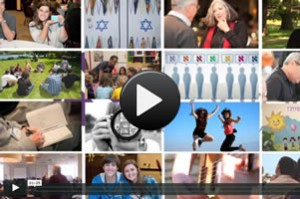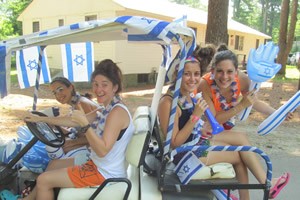
Blending superb Israel content with high quality educator development has been the iCenter’s M.O. since its founding. When the iCenter launched the Aleph Bet of Israel Education in 2011, it was the first attempt to introduce common language and principles into the field of Israel education. Representative of the ever-maturing field, the iCenter’s new Aleph Bet 2.0 is a refined and extended version of the original, designed to keep the guiding principles relevant and to advance the conversation about creating the best Israel education experiences.
Every community, every school, every synagogue, and every teacher now has the ability look at their programs, their classes, and their teaching to determine if they offer exceptional Israel education. Are we reaching our goals? Can we share what we’re doing in Israel education with others in a way that is understandable? Suddenly when you have a shared language it becomes much easier to collaborate.
– Michael Emerson, Educator, SAR High School, Cohort 1 member of the MA Concentration in Israel Education
Now, thousands of educators in day schools, at camps, on Birthright buses, and in so many other settings bring Israel to life for their learners. They form a cadre of talented, dynamic individuals who have gained an expertise in Israel education through iCenter initiatives, programs, and partnerships. But without the Aleph Bet—and now the Aleph Bet 2.0—the field’s evolution would have stagnated.
Israel has always been a focal point for us, but over the last few years, Israel has been infused in all the spaces in camp. From the dining hall, to the cabins, to the sports fields, to arts and culture, Israel is all around our campers. The Goodman initiative has been a driving force behind this change, giving us exciting tools and ideas to bring Israel to life at camp.
– Ellen Felcher, director of Camp Pembroke, part of the Goodman Camping Initiative and winner of the inaugural Goodman Prize for Excellence in Israel Education at Camp
Working with partners like Taglit-Birthright Israel, Foundation for Jewish Camp, and universities across the country, the iCenter uniquely taps into the personally meaningful connections to Israel. Whether focusing on Israel’s remarkable history or modern day innovations, the iCenter helps educators and their students go beyond a textbook or lecture.
…when we see students as partners in the educational process, the ability for all of us to learn grows exponentially. We have learned that Israel Educators must first explore their own personal relationship with Israel and be able to articulate “their Israel story.
– Michael Soberman is a Senior Educational Consultant at the iCenter for Israel Education and the Director of the iFellows Masters Concentration in Israel Education.
 iCenter opportunities and initiatives continue to grow and expand. Its “Conflict Toolkit” is a sophisticated and nuanced approach to learning, discussing, and understanding Israel in conflict. The Master’s Concentration in Israel Education just launched its 5th cohort and is on its way to certifying 120 educators. And, in December 2015, the iCenter will hosts its second iCamp Conference, bringing together dynamic educators, leaders, and thinkers from across North America and Israel to explore new ideas in Israel education.
iCenter opportunities and initiatives continue to grow and expand. Its “Conflict Toolkit” is a sophisticated and nuanced approach to learning, discussing, and understanding Israel in conflict. The Master’s Concentration in Israel Education just launched its 5th cohort and is on its way to certifying 120 educators. And, in December 2015, the iCenter will hosts its second iCamp Conference, bringing together dynamic educators, leaders, and thinkers from across North America and Israel to explore new ideas in Israel education.
The Jim Joseph Foundation has awarded more than $7,360,500 in grants to the iCenter. For more information on iCenter opportunities—and to pre-register for iCamp 2015—visit www.theiCenter.org.
 It’s a precarious world for Jewish girls — in addition to the angst of adolescence, they are at risk for depression, eating disorders and risky behavior. And Jewish girls, post-bat mitzvah, also often drop out of Jewish life.
It’s a precarious world for Jewish girls — in addition to the angst of adolescence, they are at risk for depression, eating disorders and risky behavior. And Jewish girls, post-bat mitzvah, also often drop out of Jewish life.
 cognition of its success infusing Israel into a greater part of camp culture and overall experience, Camp Pembroke in Pembroke, was awarded the inaugural “Goodman Prize for Excellence in Israel Education at Camp” by the iCenter for Israel Education, Foundation for Jewish Camp (FJC), and the Lillian and Larry Goodman Foundations.
cognition of its success infusing Israel into a greater part of camp culture and overall experience, Camp Pembroke in Pembroke, was awarded the inaugural “Goodman Prize for Excellence in Israel Education at Camp” by the iCenter for Israel Education, Foundation for Jewish Camp (FJC), and the Lillian and Larry Goodman Foundations. It hasn’t achieved Starbucks-level growth, with a franchise on every corner. Not yet.
It hasn’t achieved Starbucks-level growth, with a franchise on every corner. Not yet.

